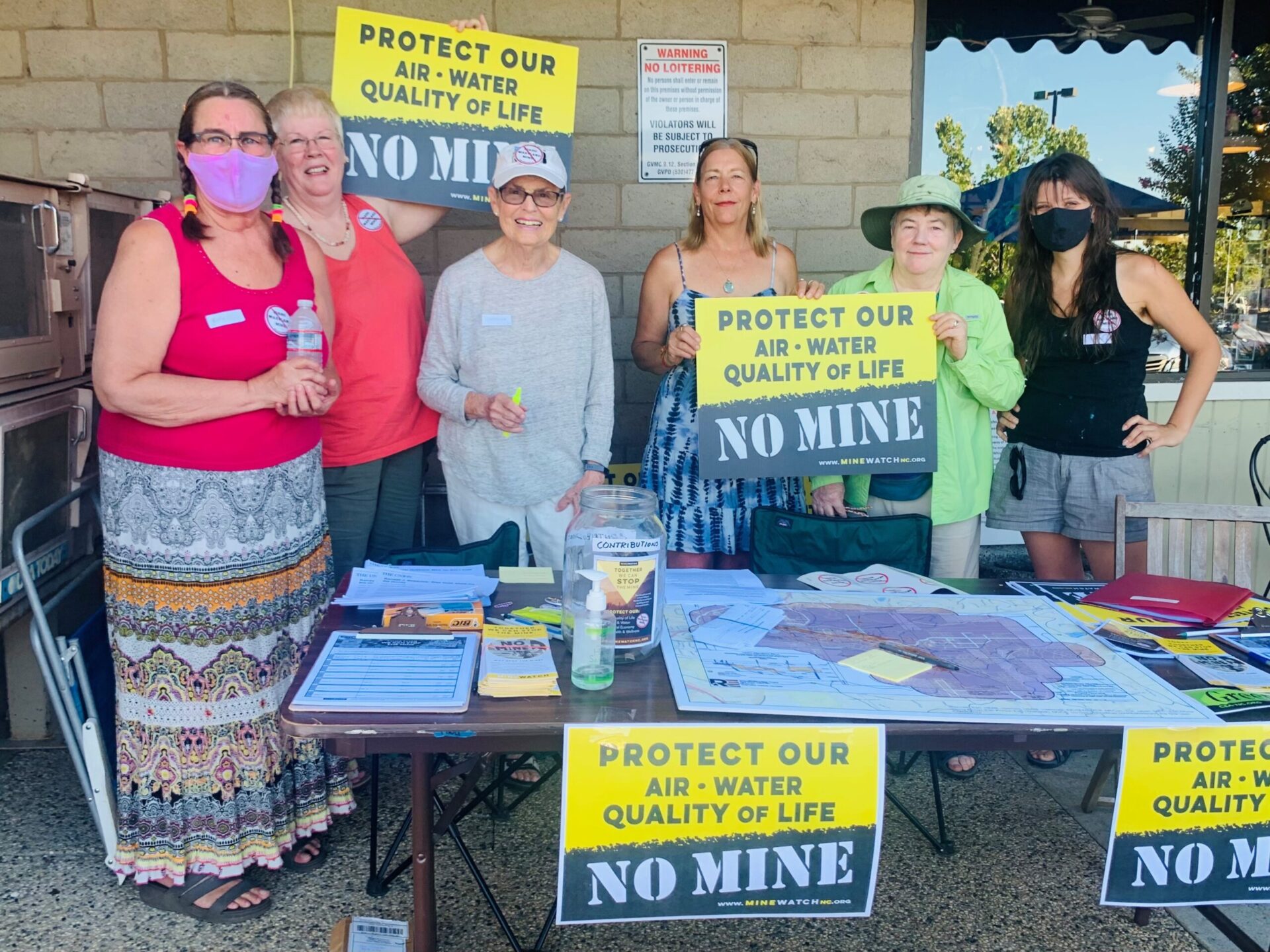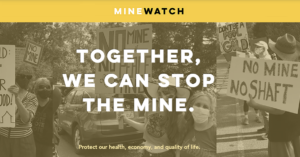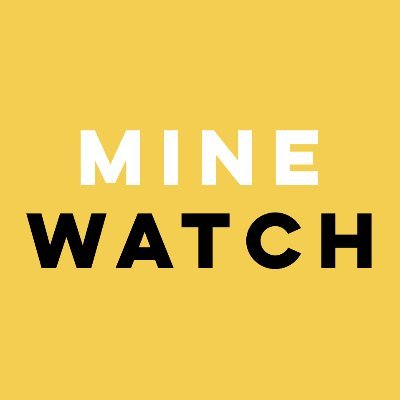MineWatch: Interview with Ralph Silberstein
The Draft Environmental Impact Report (DEIR) assessing the impacts of the Idaho-Maryland Mine was recently released. SYRCL is currently in the process of preparing comments to submit. We are one of a number of organizations doing so.
MineWatch is the organization leading on-the-ground efforts, so we connected with Ralph Silberstein to learn more about the report and MineWatch’s response.
SYRCL: Why is the ID-MD Mine project being resurrected?
 Silberstein: People imagine they can get rich.
Silberstein: People imagine they can get rich.
As some readers may know, the last run at re-opening the mine was with Emgold from 2006 to 2012. Now Rise Gold, a company headquartered in Canada that has a questionable track record, is working to re-open the mine. You can learn more about MineWatch’s assessment of Rise Gold in this article: Shouldn’t Trust Rise Gold | MineWatchNC
MineWatchNC and why are you opposing the mine?
MineWatch was formed to specifically address the Idaho-Maryland Mine. It is comprised of residents, businesses, and nonprofits who are impacted by the proposed mining operations. The effort is spearheaded by Community Environmental Advocates Foundation (CEA Foundation) and includes approximately 25 community organizations and businesses.
Groups like SYRCL, Sierra Club, Sierra Fund, Wolf Creek Community Alliance, and the California Native Plant Society are coordinating their efforts so that we can stop this thing. We now have thousands of folks involved and we hope some of SYRCL’s readers will join us in our efforts.
Those interested in getting more involved and receiving updates can subscribe to our newsletter at Subscribe | MineWatchNC

What is the DEIR and who wrote it?
The Draft Environmental Impact Report (DEIR) was written by consultants retained by Nevada County. The DEIR is required, by law, to disclose all potentially significant environmental impacts to the public. The intent is to give the public and community the information and tools needed to make informed decisions. The County is required to analyze and mitigate environmental impacts before approving a project.
It’s important to know that the DEIR does not mandate a certain result. The analysis provides decision-makers (the Nevada County Planning Commission & Board of Supervisors) with the information they will need to ultimately approve, amend, or reject the proposed project.
This process allows the County to require the project to implement changes that will lessen or avoid significant impacts. They can also adopt a finding of Overriding Considerations if they determine the project benefits outweigh the environmental impacts that can’t be mitigated. Ultimately, the Board of Supervisors will determine whether the analysis is complete or requires further study.
This report is now out and we encourage the community to submit their comments by the County deadline on Monday, April 4th. When you read the DEIR, I suggest you start with the Executive Summary and then go to the Table of Impacts and Mitigations. From there you can identify areas for closer study. Here is our guide on How to Write DEIR Comments.
We just held a webinar for the community that has a great overview of what the DEIR is and what the community can do that you can watch: DEIR EXPLAINER – MineWatch January 2022 Meeting
 What are a few of the key takeaways from the DEIR?
What are a few of the key takeaways from the DEIR?
There are a large number of impacts identified in the draft report. 83 to be exact. And that’s a huge number for a small community. Of those, there are impacts related to noise, traffic, and aesthetics that are classified as “significant and unavoidable”, which all by themselves, could be a reason for the supervisors to reject this project. But those are just the tip of the iceberg.
In CEA Foundation’s view, the DEIR fails to address the Mine’s impacts on many fronts. We’ve identified several major flaws in the scientific analysis. Some information is missing altogether. And there’s a long list of inadequate mitigations.
Hydrology is one of the biggest areas of concern with its potential impact on groundwater and wells. This report would have us believe that only 30 wells are at risk due to dewatering from the mine – and the included mitigations address only that possibility. But there are some 300 wells and broader groundwater damage concerns that depend on getting it right.
Here’s an example: It looks like almost no flow data was collected from the mine’s drain points where the water from the entire mine complex drains into Wolf Creek. According to the hydrology reports, only a few observations were used, and the measurements provided seem to be inconsistent with past reports that show outflow into Wolf Creek about ten times greater than their data. Faulty assumptions yield faulty results.
In addition, the DEIR analysis fails to adequately characterize the massive amounts of tailings and waste rock that will be dumped on the surface and needs to fully address the potential for long term contamination of our precious water resources.
Another issue is connected to climate change and greenhouse gas emissions. The DEIR states that the amount of GHG emissions will be 9,000 metric tons a year. This extraordinary amount of emissions is simply unacceptable, but it gets worse because their analysis doesn’t take into account the GHG for cement manufacturing.
That alone adds another 4,000 metric tons, which would put this project well over the 10,000 MT “significance” threshold if included. The report not only opts for the least desirable form of mitigation with carbon offsets, but the project itself would almost completely erase our County’s Energy Action Plan to cut power consumption and curb climate change.
There’s lots more, of course, but in summary, we believe additional impacts will be revealed as “significant” which could cause the DEIR to be re-circulated before calling it final.
Read more about our community’s reaction to the DEIR 
How can people get involved?
There are lots of ways people can help. Sign the petition. Talk with neighbors. Mark your calendar to attend critical events.
We’re also asking people to write a comment letter, due April 4th, to Matt Kelly, Senior Planner at the Nevada County Planning Department (full address in the ‘How to Write DEIR Comments‘ manual).
The community is hosting a wide range of activities in the coming weeks, both digital and in-person (with masks). Some people are holding letter-writing parties for those who want to write comments. We’ve also prepared a “how-to” guide that includes the information about where to send comments: How To Write DEIR Comments
For folks who like to talk to neighbors, we would really appreciate help getting more petition signatures. We are setting up tables outside of local businesses, canvassing neighborhoods, and reaching out to businesses. Our recently launched volunteer webpage makes signing up to help us table at these events easy.
Because of COVID, social media is of special importance right now, so we’re also encouraging people to set aside a little time each week to share our posts and events online. They can even sign up to get helpful social media tips.
All the information and links are available online at Take Action | MineWatchNC

SYRCL thanks MineWatch for all their work watchdogging this project, sharing information, and engaging community members in opposition.
Did you enjoy this post?
Get new SYRCL articles delivered to your inbox by subscribing to our ENews.



